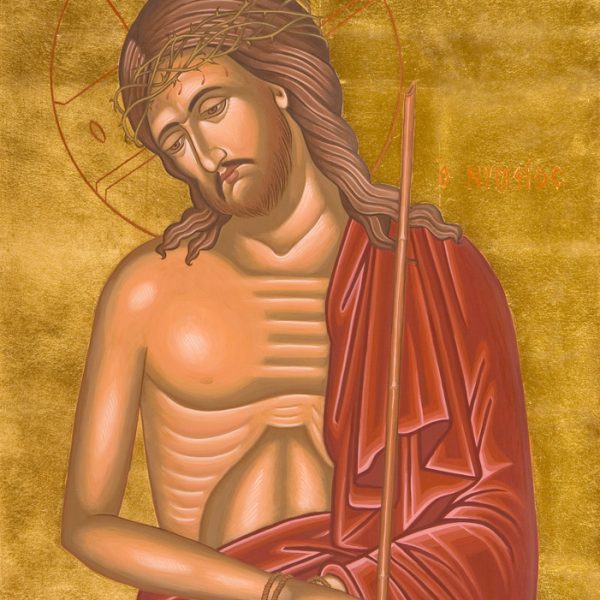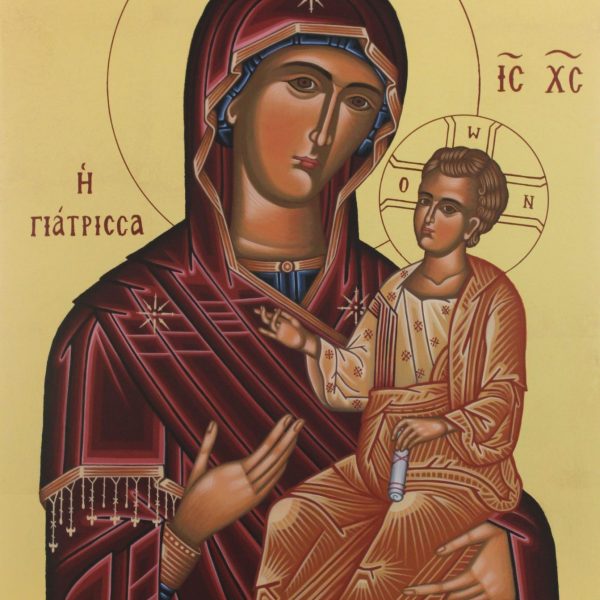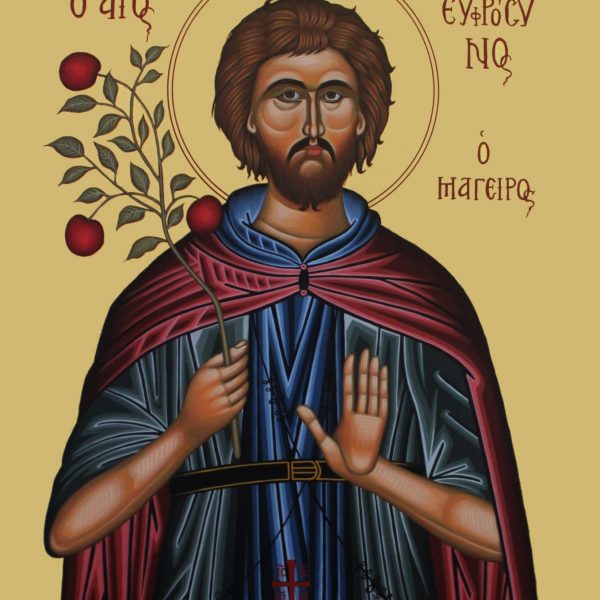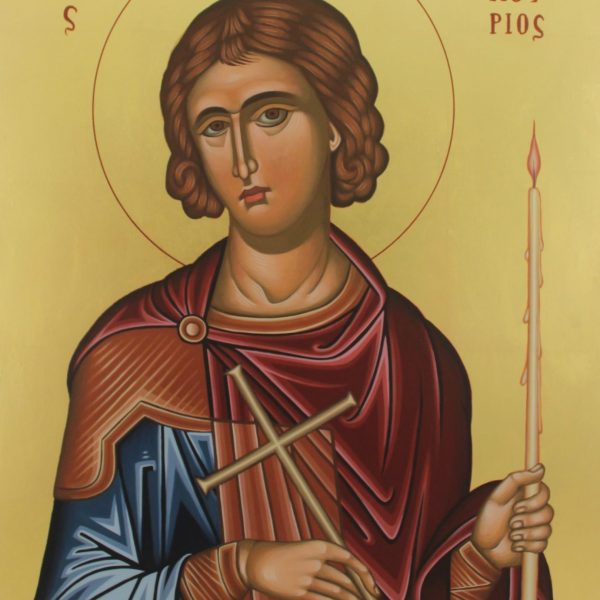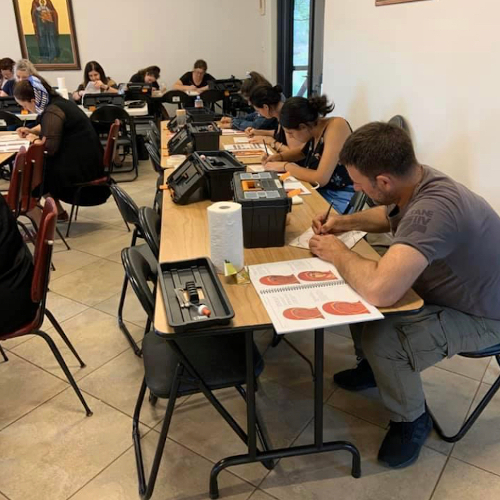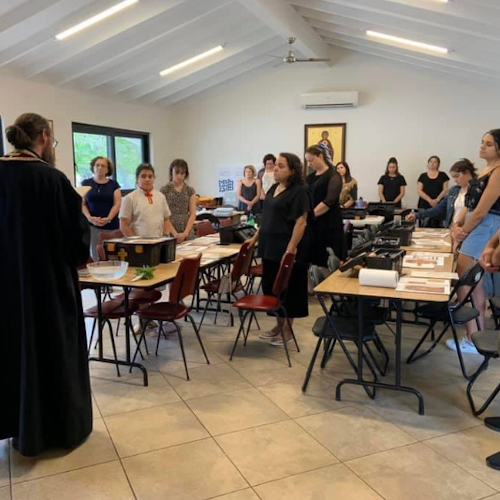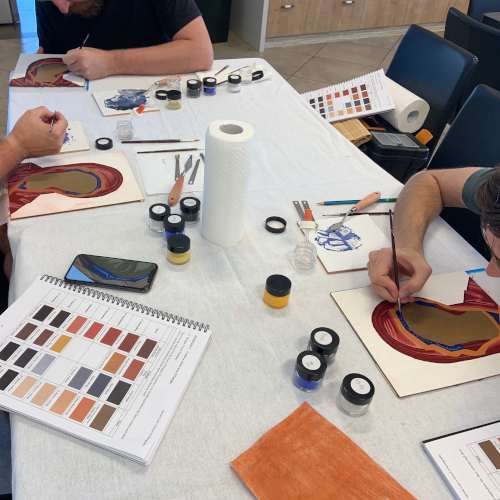Byzantine Iconography
Course Outline
History
The Byzantine School of Saint John Monastery was established in 2008. It came about after his Grace Bishop Emilianos of Meloa, who at the time was the Abbot of the Holy Monastery of Saint John, viewed a sample of the icons written by Mr Peter Kakulas, who had just completed a three-year Byzantine Iconography Diploma course with Academia Institute of Education and Culture. His Grace was suitably impressed by his icons and asked if he would be interested in offering courses of iconography. After a little hesitation he said “Yes, but only if God wants it.” His Grace said, “It’s not just God’s will, we also have to participate.” So, early in 2008, the classes commenced and everyone was pleasantly surprised with the enthusiastic response of the people. Throughout the year, the students were taken on a journey. Topics covered included the symbolism and spirituality aspect of an icon, together with the practical side of icon writing. The school now offers short eight-week courses throughout the year, held on eight consecutive Saturday afternoons. Please refer to Facebook for dates and times or contact the Abbot of Saint John Monastery, Fr Prodromos at frprodromos@stjohnmonastery.com.au.
The Course
Iconography courses are held on the grounds of the Monastery. These courses have been successfully held since 2008 and have given people of 10 years of age and above an introduction into the ancient art of Byzantine Iconography. Some students have continued to write some very detailed and indeed special icons. In the introductory course, you will be guided through a step-by-step process to write an icon using the traditional technique known as ‘egg tempera’ which has been used within traditional Orthodox Iconography from the Byzantine times.
Testimonies and experiences during the iconography course
“My eyes have opened; I now see icons in a different light…”
“Iconography has brought me closer to God…”
“It’s like the curtains have opened, I now see things differently…”
“Through Iconography I’ve learnt more about my faith…”
Course information
Location: Holy Monastery of Saint John, 280 Holmes Road Forrestfield
When: The course runs for 8 weeks comprising 8 x 3 hour lessons.
Next course: 18th September 2021
Cost: $330 for tuition and all materials; gold leaf, course notes, board, pigments, brushes etc. Previous students will pay for tuition and any required materials.
Prerequisites: No experience is required, you just need an open heart.
Reservations: To make a reservation or enquire about the course please contact Peter Kakulas, course teacher on 0417957688 or p_kakulas@bigpond.com, open to everyone from the age of 10 years.
Some student icons
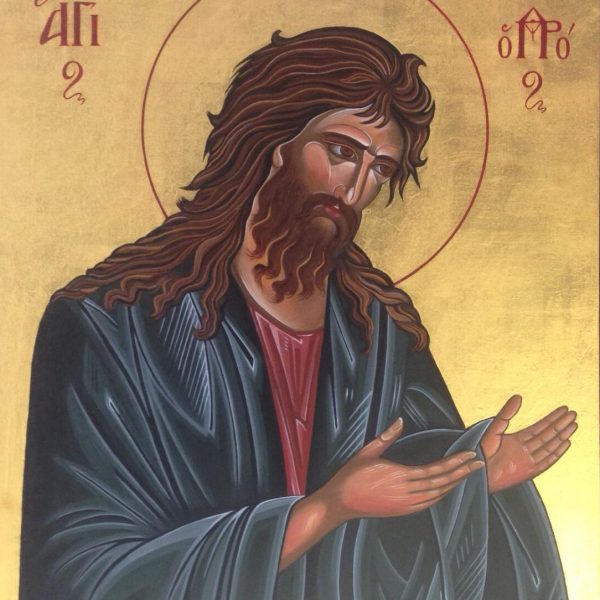
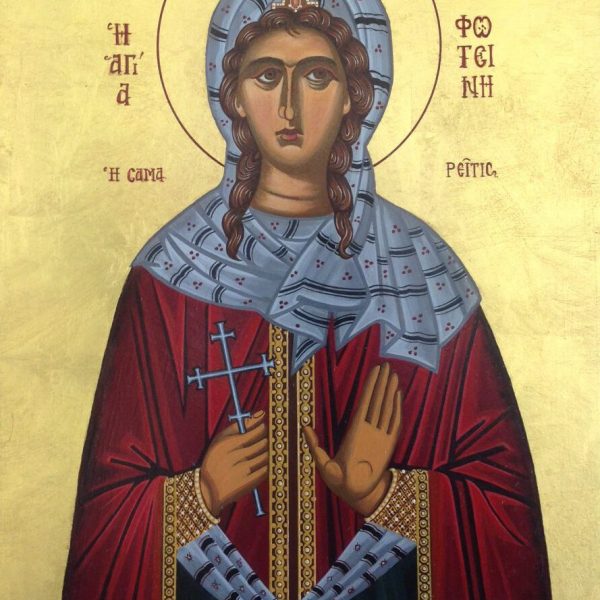
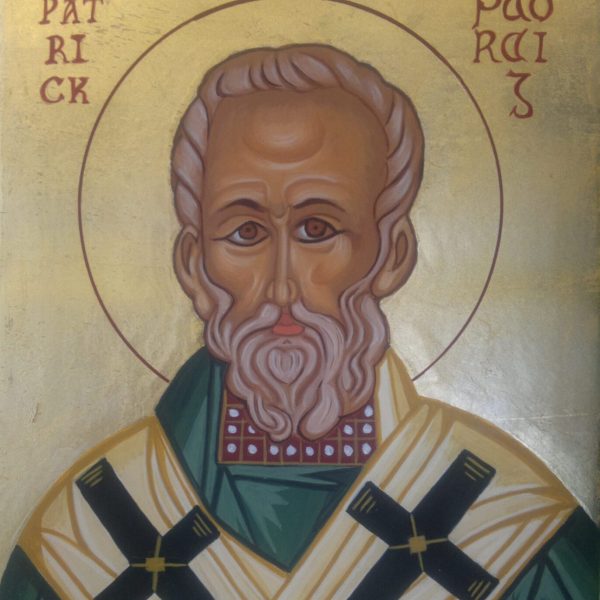
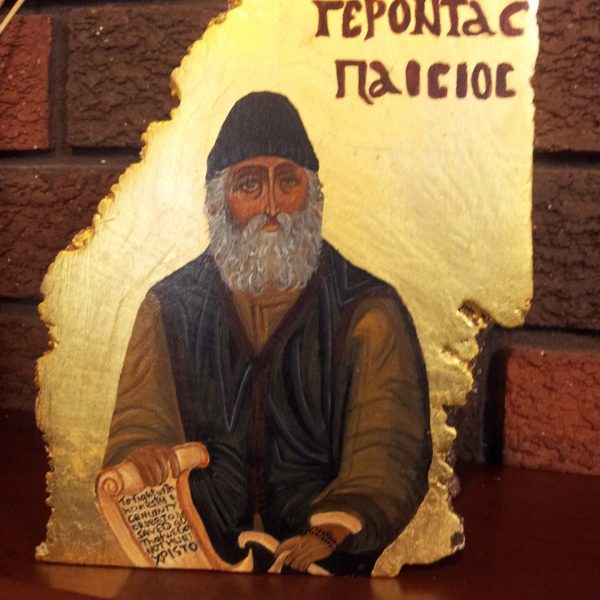
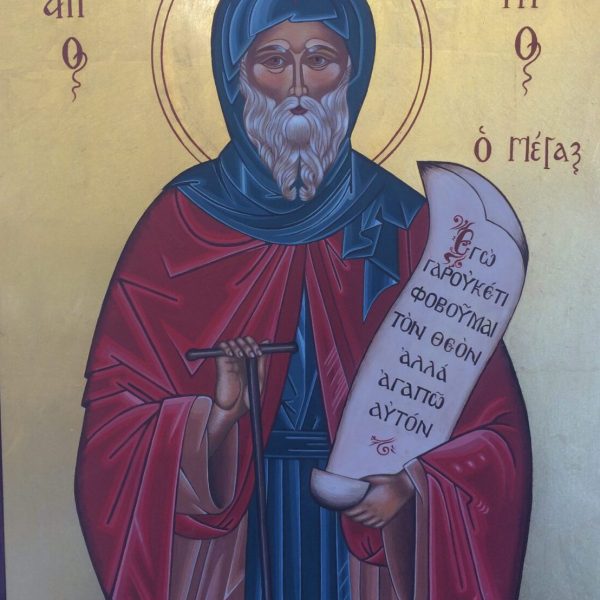

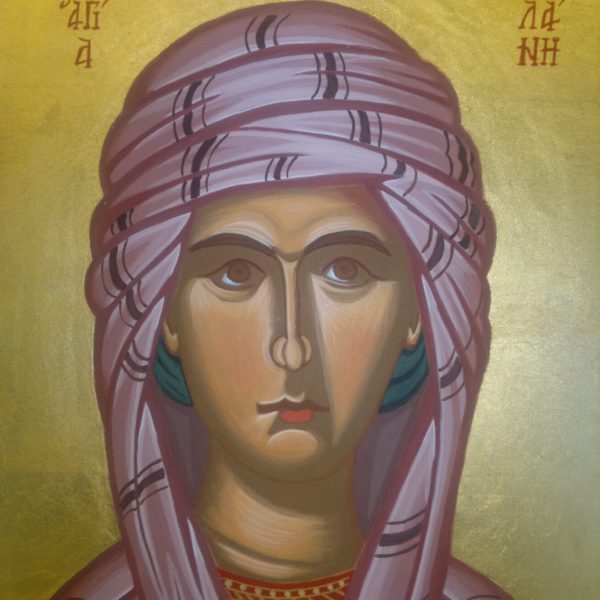
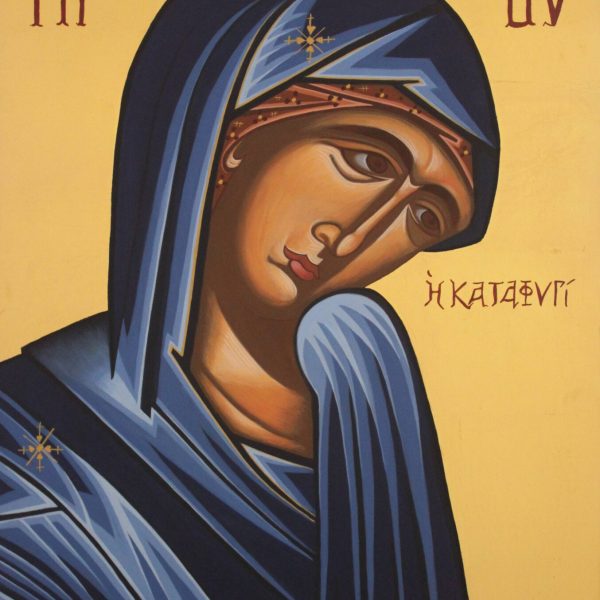
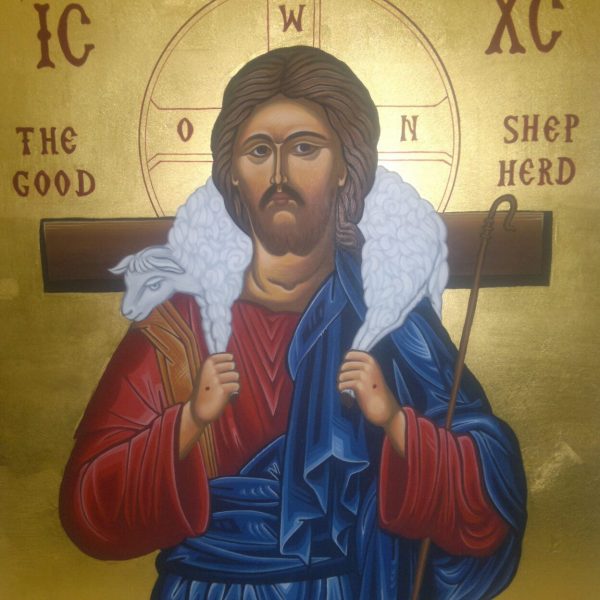
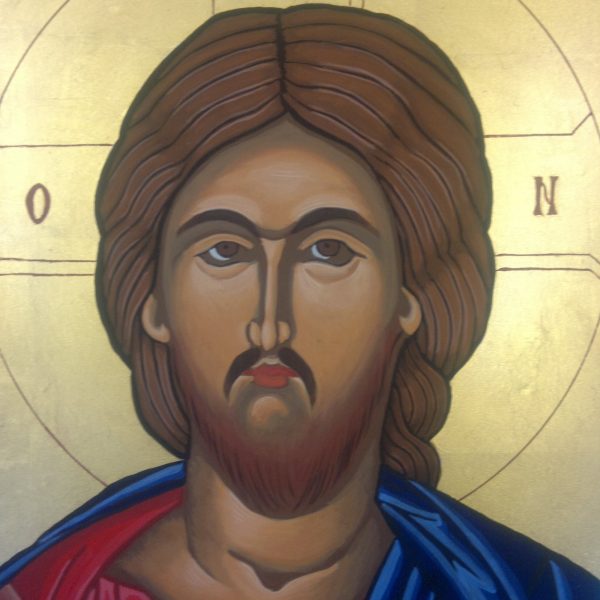
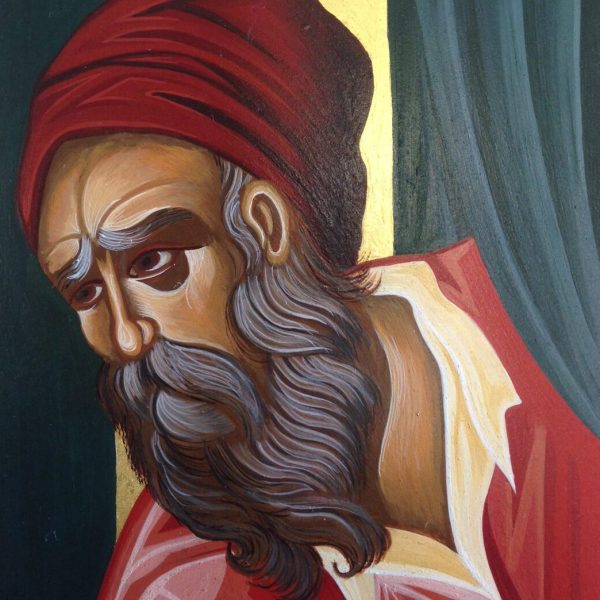
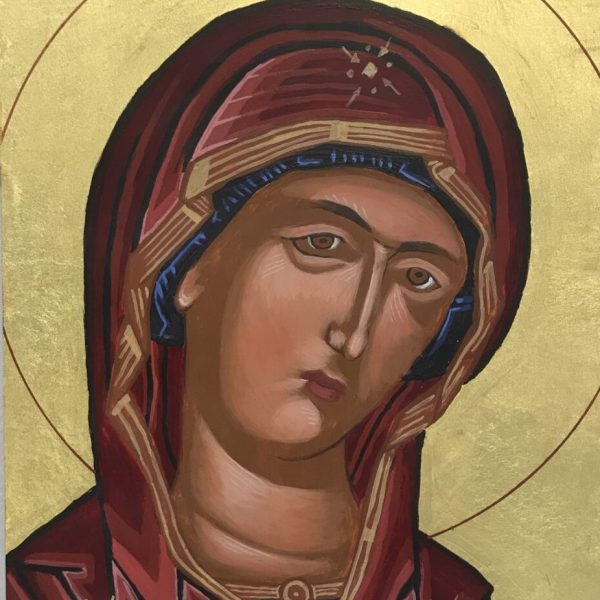
What is an icon?
- “The icon has the ability to invoke in me the memory of the forgotten depth of my own being. It enables me to see my true face, it orients me towards my destiny in God and this vision, this remembrance, this knowledge fills me with unspeakable joy and profound consolation.” Archimandrite Maximos Constas
- “The icon has a distinctively charismatic function you would say. It bears the energy and the grace of the sacred person whose image it projects.” Archimandrite Maximos Constas
- “An icon is like a fire, how can you walk by an icon and not be warmed by it?” Elder Aimilianos of Simonopetra
- “The icon is not a work of art, it’s not reducible to a work of art but rather it is a work of witness, an encounter with the sacred that makes use of art.” Archimandrite Maximos Constas
- “Icons are not simply portraits but manifestations of human persons in their new heavenly condition. They are images of the spiritual character of human beings reborn as it were in the womb of eternity.” Archimandrite Maximos Constas
Iconography Symbolism Posters
Click here to view a simplified icon writing process and an example of the symbolic language in the icon of The Nativity.
Click here to see how we depict Christ in an icon and an example of the symbolic language in the icon of Christ being tempted in the desert.
Click here to see why an icon is not a representation, but rather a reflection of its source and how the reflection is achieved.
